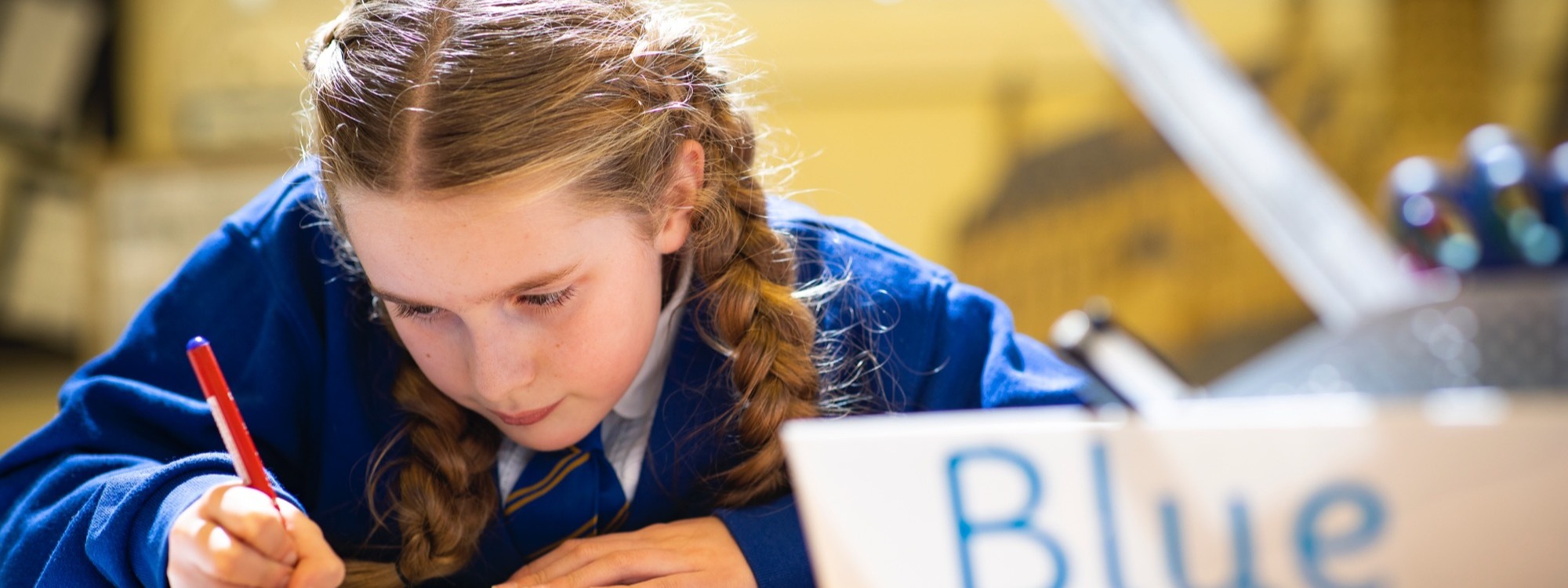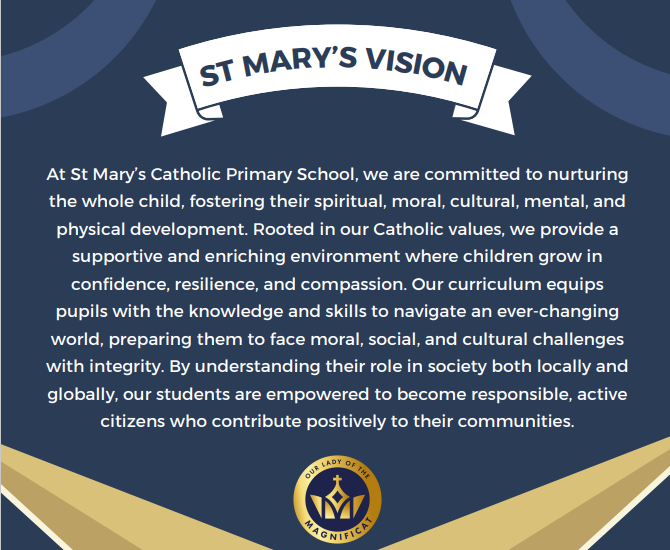
- Home
- Curriculum
- Subject Information
- History
History
History at St Mary's Catholic Primary School
Our approach to teaching history in primary school is enquiry-based, engaging, and designed to develop critical thinking skills. We encourage pupils to explore the past through stories, artefacts, role-play, and primary sources, making history come alive. Lessons focus on key historical events, significant individuals, and changes over time, helping children understand how the past shapes the present. We promote chronological understanding and historical enquiry by encouraging pupils to ask questions, analyse evidence, and draw their own conclusions. By making connections between local, national, and global history, we foster curiosity and a deeper appreciation of the world around them.
Intent:
At St Mary’s, our History curriculum aims to engage and excite children’s curiosity, and supports the development of key historical knowledge, skills and concepts through the study of British and local history and other significant time periods and societies. Our History curriculum has been designed to cover all of the skills, knowledge and understanding as set out in the National Curriculum. In understanding periods, events and people from the past, our pupils will gain a greater appreciation of today’s world and their place within it. To ensure that pupils develop a secure knowledge that they can build on, our History curriculum is organised into a progression model that outlines the skills, knowledge and vocabulary to be taught in a sequentially coherent way.
Implementation:
The teaching, learning and sequencing of the History curriculum is as follows:
A thematic curriculum approach has been implemented to ensure coverage of knowledge and progression in skills and concepts.
In EYFS and KS1, children will focus on the world around them and their living memory of History before moving to events that go beyond living history. This will ensure a firm foundation for KS2 History.
In KS2, the History curriculum is structured in a way that allows for pupils to develop a sense chronology, and to make links between current and previous learning. This allows pupils to build an image of History over time and to use their knowledge of previous periods, events and people to better understand current learning.
The progression of knowledge and skills are set out in order to build and develop the following concepts:
-Chronological understanding
-Similarities and differences
-Cause and effect
-Significance
-Continuity and change
-Enquiry
-Interpretation
What a typical lesson looks like:
Rewind: The lesson starts with a recap of previous learning, using quick discussions, timelines, or quizzes to reinforce key facts and chronology. Pupils might examine an image, artefact, or key question to spark curiosity and link past knowledge to the new topic.
Teach It: The teacher introduces the new historical topic through storytelling, primary sources, videos, or dramatic re-enactments. Key events, people, and concepts are explained, encouraging pupils to ask questions and think critically about the past.
Practise It: Pupils engage in interactive activities such as analysing historical evidence, debating perspectives, sequencing events on a timeline, or role-playing historical figures. They work collaboratively to interpret sources, draw conclusions, and understand different viewpoints.
Assessment: The lesson ends with a formative assessment, such as answering an enquiry question, writing a short reflection, or completing a quiz. This helps check understanding, consolidate learning, and guide future lessons.
Impact:
Children are engaged, curious and resilient in History lessons and relish the challenge and opportunities for fun that the subject offers.
Children are critical and analytical in their thinking, making informed and balanced judgements based on their knowledge of the past.
Children are aware of how historical events have shaped the world today, including History at the local and personal level.
Children develop enquiry skills to pursue and investigate their own interests within a topic.
Children retain learning and explicitly make connections between what they have previously learned and what they are currently learning.
Children are able to articulate what they have learned in History and can describe significant periods, events and people from the past.
Children remember more, know more and can do more.
